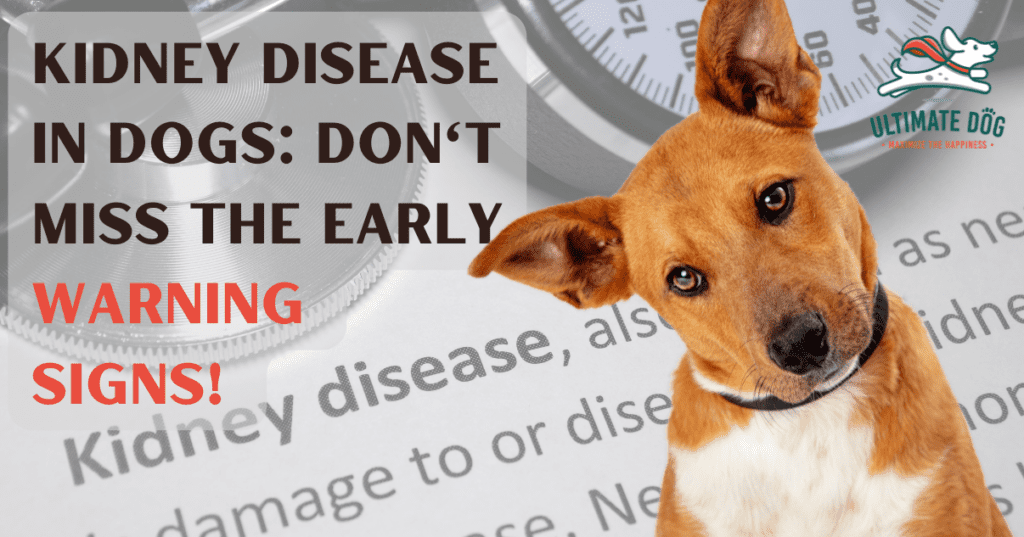Given how common kidney disease in dogs is, it is surprising how little we know about it. While treatments have gotten better, there is still no cure for chronic kidney disease, and we only have a tentative grasp on what causes this condition in otherwise healthy animals.
But that doesn’t mean you are powerless to prevent kidney disease in your pet. The better you understand the role of the kidneys and how this condition progresses, the better you can protect your dog from potential long-term complications.
What Is Kidney Disease in Dogs?
Dog kidneys, just like our own, are responsible for cleansing toxins from the blood. Unlike the toxins filtered by the liver, which enter the body through the gut, toxins filtered through the kidneys are largely made up of waste products produced by cells in the body.
When cells break down glucose, protein, and fat for energy, they create waste known as urea. In high concentrations, this product is toxic to the body and must be removed from the blood and flushed away. Nephrons within the kidney are responsible for turning urea into urine and filtering it out of the body and into the bladder.
In addition to normal waste products, the kidneys are also responsible for filtering certain medications and toxins that are able to bypass the liver. The balance of water and electrolytes in the blood, as well as some aspects of blood pressure, are also regulated by the kidneys.
When nephrons inside the kidney stop working, toxins begin to build up in the bloodstream. For humans and dogs alike, this can cause a host of problems. How quickly this process progresses determines the type of kidney failure occurring.
Acute Renal Failure (ARF)
In dogs, acute renal failure (ARF), or acute kidney failure, occurs suddenly, often over only a few days. This condition usually occurs after the kidneys are damaged due to injury, infection, or severe dehydration.
Kidney injuries can be physical but are most often incurred after ingesting toxins such as antifreeze or medication. Some bacteria are known to cause ARF in dogs, most notably leptospirosis.
Often, ARF can be treated and even reversed if caught quickly. Most dogs who experience an acute kidney failure episode recover to normal kidney function. But, if not caught in time, ARF can be fatal, so it is vital that you take your dog to the vet as soon as you notice symptoms.
Chronic Renal Failure (CRF)
Chronic renal failure in dogs refers to the slow deterioration of the kidneys over the course of months or years. Often, this condition isn't recognized until more than two-thirds of the nephrons in the kidney have already stopped functioning. Reversal of the disease is unlikely even when caught early, and treatment is usually geared toward supporting the remaining nephrons and reducing toxin buildup in the blood through other means.
The causes of CRF are not well understood, though there are a variety of factors known to influence the progression of the disease. We’ll look more closely at this in a moment.
Dog Kidney Disease Symptoms
Chronic kidney failure in dogs presents slowly with clinical symptoms, including blood work indicators, which are not visible until much of the kidneys have already stopped working. At this point in the progression of the illness, you may notice signs such as:
- Excessive thirst
- Excessive urination
- Straining
- Pain or discomfort
- Weight loss
- Loss of appetite
- Blood in the urine
- Mouth ulcers
- Chemical-sweet smelling breath
- Lethargy
End-stage CRF and standard ARF will show more extreme symptoms, including:
- Vomiting
- Pale gums
- Uncoordinated movements
- Seizure
- Extreme lethargy
Causes of Kidney Disease In Dogs
There is no one cause of chronic renal failure in dogs, but rather a melee of risk factors that are likely to cause damage to the kidneys that may or may not progress to CRF in the future.
Disease
Some of the most well-understood primary causes of dog kidney issues are Cushing’s Disease, Addison's Disease, and diabetes. Each of these diseases puts extra strain on the kidneys that can lead to nephron failure over time.
In order to avoid renal complications, it is important you follow treatment protocols outlined by your vet and do what you can to support kidney function. Frequent blood testing to determine kidney values is often done to track damage when dogs are being treated for these problems. Since early detection is one of the most important factors in the prognosis of CRF, it’s vital that you don’t skip these tests.
Kidney Stones
Kidney stones, when recurrent or when treatment to remove them takes time, can cause damage to the ureter and other tissues in the kidneys. This damage is thought to contribute to a dog’s risk of developing kidney disease later on in life.
This condition can be caused by a number of factors, from genetic predisposition to nutrient intake. Assuring your dog is getting a balanced, species-appropriate diet is one way to avoid many types of kidney stones. Dogs with a predisposition to or a history of stones should be fed a low oxalate diet that excludes spinach, sweet potato, and brown rice and includes only a limited amount of organ meats.
Kidney Infection
Kidney infection is another perpetrator of kidney damage that can increase a dog’s risk of chronic kidney disease later on. The most common culprit is pyelonephritis, an upper urinary infection that occurs when bacteria travels from the bladder to the kidneys.
In extreme cases, pyelonephritis can cause immediate damage to the nephrons, resulting in acute renal failure. Even if the dog recovers or damage is minimal, the dog may still be at an increased risk of CRF as they get older.
Kidney infections are most common in middle-aged to geriatric dogs. Those with diseases that reduce kidney function, such as diabetes or Cushings, dogs that are immunocompromised, and those that suffer frequent urinary tract infections are most at risk.
Toxins
One of the most common causes of acute kidney failure that can also lead to chronic kidney failure is the ingestion of toxins. Many toxins are able to bypass the liver and enter the bloodstream. When this happens, it is up to the kidneys to filter out these chemicals, a process that can cause quick and lasting damage to the nephrons.
The most common form of this type of poisoning is ethylene glycol poisoning. This sweet-tasting chemical is the active ingredient in antifreeze. It is also highly toxic and as little as half a teaspoon per pound of body weight can be fatal.
Antifreeze poisoning must be treated within twelve hours of ingestion to stop damage to the kidneys and neutralize the toxin. Even if the dog recovers, long-term scarring inside the organs could cause CRF later on.
Other toxins known to cause kidney damage and increase a dog’s risk of kidney failure include NSAID medications, grapes, and an overdose of vitamin D.
Obesity
Obesity has long been associated with kidney failure in humans due to its relation to metabolic disease and diabetes. But research into the effects of weight gain and loss on kidney function in dogs seems to indicate that obesity alone can be a driving cause of kidney impairment.
One study that followed overweight but otherwise healthy dogs through weight loss found that all markers of kidney function improved over the course of the study. Moreover, the degree of improvement was directly related to the percentage of body mass lost. Many other studies have linked high-fat canine diets to decreased kidney function.
While obesity appears to be a clear risk factor for CRF in dogs, it also appears to be correctable with weight loss.
Dental Disease
The potential for dental disease to negatively affect the health of internal organs is a common talking point repeated by veterinarians, especially before they pitch a dental cleaning procedure for your pet. While there does appear to be a clear link between periodontal disease and kidney disease, this relationship is more chicken and egg than a straight connection.
Several post-mortem investigations have shown a clear association between the degree of dental degradation and the severity of heart and kidney inflammation in dogs. These results are often interpreted as an indication that poor dental health results in kidney disease.
However, long-term studies into the risk factors for CRF have found that periodontal disease in dogs most often appears one to two years before the CRF diagnosis is made. Because the diagnosis of CRF is not possible until over 60% of the kidney is dysfunctional, this would indicate that the development of dental disease occurs after nephron death in the kidneys has already begun.
According to these studies, periodontal disease is not a cause of kidney failure, but rather one of the earliest symptoms of the disease. Given that mouth lesions are one of the identifying symptoms of acute kidney failure, it makes sense that chronic kidney failure could lead to changes in the oral environment that would lead to the development of dental disease.
Regardless of which causes which, dental care for your pup should always be a priority. And any changes to dental health should be brought to your vet's attention as these may indicate a greater problem.
Genetics
One of the most disheartening causes of kidney failure is the one that we have very little control over. And that is the clear genetic component that exists.
Many small-breed dogs suffer CRF at much higher rates than large breeds. Though, certain large breeds, such as Dalmatians and German shepherds, are at a higher risk for developing specific kinds of kidney failure.
Dogs that fall into this category require extra kidney support throughout their lives. But even that may not be enough to overcome their genetic predisposition.
Dog Kidney Disease Treatment
Treating chronic kidney disease in dogs often begins with medications meant to balance electrolytes, increase urine production, and stimulate appetite. Some dogs may have the option to receive owner-administered fluid and electrolyte subcutaneous injections at home. Once a dog's system has been rebalanced, the main focus of CRF treatment is dietary support. In other words, the dog’s diet is changed to decrease the number of toxins deposited in the blood during cellular metabolism.
This treatment does not cure the disease or help the kidneys recover. Rather, it is meant as a therapy to slow the progression of nephron death and increase the animal's life expectancy.
In some cases, dialysis may be an option. This treatment uses machines to cleanse your dog’s blood in much the same way the kidney would. But, like other treatment options, this will not stop the progression of the disease nor fix the damage that has already been done.
Preventing Canine Kidney Disease
Because there is currently no cure for kidney disease in dogs, your best option as an owner is to do what you can to prevent this issue from happening to your pet. While no one thing will guarantee your dog won’t get kidney disease, focusing on these preventatives can greatly reduce your dog’s chances of suffering from this condition.
Diet
Many of the toxins our dogs are exposed to on a daily basis don’t come from them getting into things, but rather, from what we put in their food bowls. Preservatives, artificial colors, chemicals present in cheap meats, pesticides on cheap fillers, and much more make up a surprising percentage of commercial dog foods.
What your dog’s liver can’t filter out, their kidneys will have to deal with. After a lifetime of eating this kind of unhealthy food, it’s no wonder most geriatric canines end up with kidney problems.
Even if your dog’s food is on the more natural side, it is likely missing antioxidants and valuable enzymes necessary to support the health of the organs and fight free radicals and inflammation.
Feeding a fresh or raw diet high in biologically appropriate and balanced protein and fat sources can significantly lower your dog’s chance of developing kidney problems. If this isn’t an option, then choosing a high-quality food and supplementing it with superfoods can make a big difference.
Toxin Exposure
Outside of the dog bowl, our pets are exposed to plenty more toxins that have a negative effect on kidney health. Antibiotics and NSAIDs are two of the most well-known and highly prescribed medications known to damage the kidneys. Overuse of these in your dog could have lasting effects.
Other medications, vaccinations, anesthesia, and many other drugs are equally likely to cause long-term damage to internal organs. Limiting your dog's exposure to these as much as possible should always be your goal.
And, of course, you should be hyper-aware of the many household chemicals and human foods that pose a threat to your pets. Keep cleaning chemicals, automotive supplies, medications, and human food out of reach at all times.
Water and Outdoor Access
One of the simplest things you can do to support your dog’s kidney health is to offer them plenty of clean, fresh water every day. Drinking dirty water increases the number of toxins in the body and makes your dog’s kidneys work harder. Just as important is that your dog has plenty of water, as dehydration can stress the kidneys and expose them to concentrated levels of harmful toxins.
Of course, the more water your dog drinks, the more often they’ll have to urinate. If they don’t have adequate access to the outdoors or their normal potty spot, they could hold their urine for longer than is healthy. While holding it won’t immediately damage the kidneys, it does lead to an increased concentration of bacteria in the bladder. This can increase the risk of UTI and kidney infection. In dogs that already have renal or urinary tract issues, the effects could be even more damaging.
Puppies should be given a chance to relieve themselves about every three to four hours, depending on their age. Adult dogs can hold their urine for up to 8 hours, but intervals closer to 6 hours are safer, both for your carpets and for their kidneys.
The Importance of Early Detection
Whether you have taken steps to prevent kidney disease or not, screening for the problem, especially as your dog ages, is paramount. Not only is it easier to treat and support your dog’s kidneys when the disease is caught early, but the likelihood of them suffering secondary complications is much lower.
Remember, by the time your dog starts showing symptoms of kidney disease, they’ve likely already lost the use of two-thirds of these organs.
Luckily, for dogs that have yet to suffer from CRF, reducing their odds of diagnosis is as easy as feeding a high-quality, species-appropriate, nutrient-rich diet, reducing their exposure to toxins, and offering plenty of fresh water and potty breaks.
Sources
Bartges, J. W. (2012, July). Chronic Kidney Disease in Dogs and Cats. Veterinary Clinics of North America: Small Animal Practice, 42(4), 669–692.
Bartlett, P. C., Van Buren, J. W., Bartlett, A. D., & Zhou, C. (2010). Case-Control Study of Risk Factors Associated with Feline and Canine Chronic Kidney Disease. Veterinary Medicine International, 2010, 1–9.
Ethylene Glycol Poisoning in Dogs | VCA Animal Hospital. (n.d.). Vca. Retrieved September 14, 2022.
Odermatt, A. (2011, November). The Western-style diet: a major risk factor for impaired kidney function and chronic kidney disease. American Journal of Physiology-Renal Physiology, 301(5), F919–F931.
Onlinects. (2018, August 25). BLADDER STONES AND KIDNEY STONES – Canine | Glencoe Animal Hospital. Glencoe Animal Hospital. Retrieved September 14, 2022, from
Pavlica, Z., Petelin, M., Juntes, P., Eržen, D., Crossley, D. A., & Skalerič, U. (2008, June). Periodontal Disease Burden and Pathological Changes in Organs of Dogs. Journal of Veterinary Dentistry, 25(2), 97–105.
Pyelonephritis. (2022, July 25). Cornell University College of Veterinary Medicine. Retrieved September 14, 2022.
Rubenstein, D. A., Yin, W., & Frame, M. D. (2012). Flow Through the Kidney. Biofluid Mechanics, 325–345.
Signs, Symptoms & Causes of Kidney Failure in Dogs | Clemmons Vet. (2020, June 28). Retrieved September 14, 2022.
Tvarijonaviciute, A., Ceron, J., Holden, S., Biourge, V., Morris, P., & German, A. (2012, December 26). Effect of Weight Loss in Obese Dogs on Indicators of Renal Function or Disease. Journal of Veterinary Internal Medicine, 27(1), 31–38.

Sara Seitz worked in the pet industry for over a decade. In addition to being a certified dog trainer, Sara gained experience working as the general manager of a dog daycare and boarding facility, as the creator and manager of a pet sitting company, as a groomer, and as a dog behavior evaluator. She also has a bachelors in animal behavior from CSU. Currently, Sara works as a freelance writer specializing in blog, article and content writing.














Really interesting article and was completely unaware of the problem of kidney failure in dogs. Thank you for the good advice and making us aware of the issues that could affect our dogs kidney health